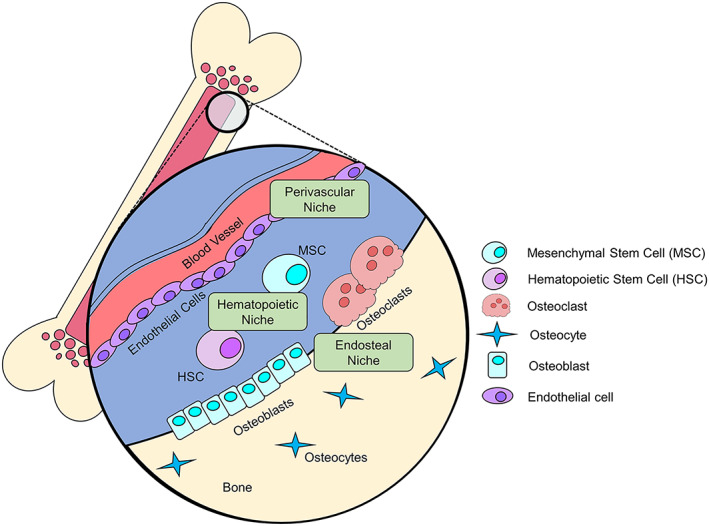Figure 2.

The bone is composed of three distinct niches that can exert pro‐ or anti‐dormancy effects. The perivascular niche contains blood vessel lining endothelial cells that can secrete factors to push cell into, or out of, dormancy, and signaling between endothelial cells and hypoxic tumor cells can drive tumor vascularization and escape from dormancy. Hematopoietic stem cells (HSC) and mesenchymal stem cells (MSC) that reside in the hematopoietic niche secrete signaling factors or produce extracellular vesicles that can influence a cell's dormancy status. The endosteal niche contains osteoclasts and osteoblasts that play a role in the vicious cycle, but can also secrete factors to promote dormancy. Since these niches are in close proximity to one another, tumor cells will often seed in the bone marrow and experience the effects of multiple niches
